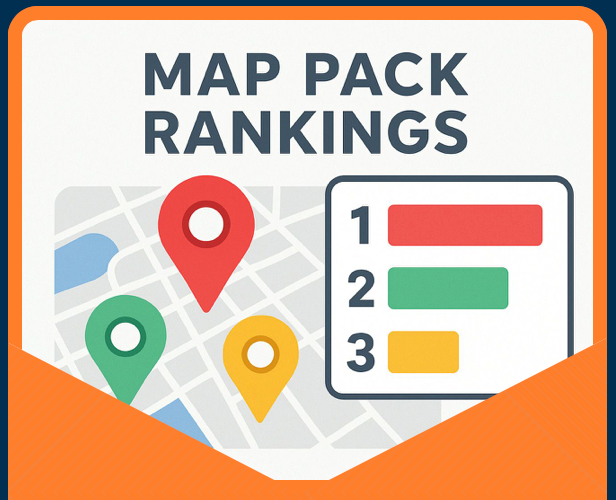
Cary Byrd // Founder of CinchLocal
How to Make a Roofer Website Without Breaking a Sweat (or a Shingle)
This is paragraph text. Click it or hit the Manage Text button to change the font, color, size, format, and more. To set up site-wide paragraph and title styles, go to Site Theme.
Why Your Roofing Business Needs a Professional Website

If you're searching for how to make a roofer website , here's a quick overview of the essential steps:
- Choose a platform - WordPress, Wix, Squarespace, or Weebly
- Select a domain name that includes your business name and location
- Pick a roofing-specific template that's mobile-responsive
- Create essential pages : Home, Services, About, Gallery, Contact
- Add trust elements : testimonials, certifications, project photos
- Optimize for local SEO with your service area and keywords
- Include lead generation features like click-to-call buttons and quote forms
How to make a roofer website is a crucial question for any roofing contractor looking to grow their business. With 80% of potential customers researching businesses online before contacting them, your website serves as your 24/7 digital storefront. A professional roofing website isn't just about looking good—it's about generating leads, building trust, and converting visitors into paying customers.
For roofing contractors specifically, a website addresses unique industry challenges. Your customers need emergency services, visual proof of your work quality, and reassurance that you're legitimate in an industry unfortunately known for fly-by-night operators. A well-designed website showcases your portfolio, displays testimonials (which 93% of consumers say influence their buying decisions), and makes it easy for storm-damage victims to contact you quickly.
Mobile optimization is particularly critical, as over 50% of web traffic comes from smartphones, and 76% of people who search for a local business on their phone visit that business within a day. For emergency roof repairs, this immediate connection can be the difference between winning and losing a job.
I'm Cary Byrd, founder of CinchLocal, and I've helped hundreds of roofing contractors create websites that generate consistent, high-quality leads using how to make a roofer website best practices that focus on conversion optimization and local visibility. My experience in digital marketing spans over a decade, with particular expertise in helping small-to-midsize roofing companies stand out in competitive local markets.

Why Every Roofing Company Needs a Professional Website
In today's digital-first world, having a professional website isn't just a luxury for roofing companies—it's an absolute necessity. The numbers tell a compelling story: 80% of potential customers will research your business online before they ever pick up the phone . Without a website, you're essentially invisible to the majority of your market.
Think about what happens when homeowners find a leak or notice missing shingles after a storm. They immediately grab their phones and search "roofers near me." If your business doesn't appear in those results, you might as well be operating in another state.

A professional website instantly transforms your image from "just another guy with a truck and ladder" to an established, trustworthy business. This credibility boost is invaluable in an industry where homeowners are understandably cautious about who they invite to work on their most valuable asset.
Surprisingly, many local roofers still rely solely on word-of-mouth referrals. While personal recommendations remain powerful, a quality website gives you a significant competitive advantage over contractors who haven't acceptd digital marketing. Your website works tirelessly as a 24/7 sales representative, capturing leads while you're up on a roof or sleeping.
The impact of online reviews cannot be overstated—93% of consumers say reviews influence their buying decisions. When these testimonials are prominently displayed on your website, they become powerful trust signals that can tip the scales in your favor.
Key Benefits for Roofers
Roofing contractors enjoy unique advantages from a well-designed website that addresses industry-specific needs. Showcasing your work becomes effortless with a digital portfolio featuring before-and-after photos of roof replacements and repairs. These visual demonstrations of your craftsmanship communicate quality in ways that words simply cannot.
When severe weather strikes, homeowners need immediate help. A mobile-optimized site with prominent click-to-call buttons connects you directly with these emergency customers exactly when they need you most. In these situations, being easily found and contacted can be the difference between winning and losing a job.
Your website also provides the perfect platform to tell your brand story . Whether you're a multi-generation family business with deep community roots or a veteran-owned company bringing military precision to every project, your unique narrative helps forge emotional connections with potential customers.
Common Pain Points When You Skip a Site
Many roofers hesitate to invest in a website, but the consequences of this decision can be costly. Lost leads represent the most immediate impact—potential customers who can't find you online will simply call the next roofer in their search results.
Without a professional online presence, customers may question your legitimacy. This lack of trust signals makes homeowners hesitate to invite you to their homes, especially for major investments like roof replacements.
Perhaps most damaging is the potential for a fly-by-night image . The roofing industry unfortunately contends with a reputation for transient contractors who disappear after collecting deposits. A professional website with documented history, authentic testimonials, and verified credentials helps distinguish your legitimate business from less reputable operators.
When you understand how to make a roofer website that effectively showcases your expertise and builds trust, you're not just creating an online brochure—you're developing a powerful lead generation tool that pays dividends for years to come. Learn more about creating effective roofing websites that convert visitors into customers.
Step-by-Step: How to Make a Roofer Website
Ready to roll up your sleeves and create a website that works as hard as you do? Let's break down how to make a roofer website into manageable steps that won't leave you feeling like you're balancing on a steep pitch without safety gear.
Choose the Right Platform (how to make a roofer website)
Your website platform is like your roofing material—choose wisely, and it'll serve you for years. Here are the top contenders:
WordPress.org is like installing a premium metal roof—it requires more upfront investment but offers tremendous long-term value. With costs ranging from $3-$30/month for hosting plus $20-$100+ for premium themes and plugins, it gives you best flexibility and SEO power. The learning curve is steeper, but the results are worth it for growing roofing companies.
Wix is your three-tab shingle option—affordable, practical, and gets the job done without complications. At $14-$39/month, its drag-and-drop editor makes website creation accessible to anyone, regardless of technical skills. Perfect for smaller operations looking for a quick, professional presence without the technical headaches.
Squarespace is like architectural shingles—beautiful and design-focused at $16-$49/month. While it offers fewer roofing-specific templates, it's ideal for contractors who want their website to reflect a premium, design-conscious brand.
Weebly represents your budget-friendly option starting around $6/month. Like a basic repair, it'll get you covered quickly and affordably, though with fewer bells and whistles. It's perfect for startups watching their pennies.
For most roofers, we recommend WordPress.org—it's like installing GAF Timberline HDZ shingles instead of the builder-grade option. The initial investment pays dividends through better SEO and unlimited growth potential.
Pick & Customize a Roofing Template
With your platform selected, it's time to choose your template—the blueprint for your digital presence:
Look for templates designed specifically for contractors or roofing companies. These already include spaces for the essential elements like service descriptions, photo galleries, and quote forms—saving you tons of time.
Mobile responsiveness isn't optional—it's as essential as proper flashing around a chimney. When homeowners find missing shingles after a storm, they're grabbing their phones to find help, not sitting down at a desktop computer.
Your brand colors matter more than you might think. Blues like #002f52 convey trustworthiness and stability (exactly what homeowners want in a roofer), while oranges like #ff7e29 create a sense of urgency and action. Make sure your template allows for easy color customization.

Unless you moonlight as a web developer, look for templates with intuitive drag-and-drop editing. And just like you wouldn't put too many layers of shingles on a roof, avoid templates loaded with flashy animations that slow down your site—speed matters for both user experience and SEO rankings.
Build Core Pages (how to make a roofer website)
Your website needs these essential pages, just like every roof needs decking, underlayment, and shingles:
Your Homepage is your digital storefront—make it count with a compelling headline that addresses homeowner pain points, clear service descriptions, and multiple ways to contact you. Think of it as your 30-second elevator pitch.
Create individual Services Pages for each offering—residential roofing, commercial roofing, repairs, and maintenance. Detailed descriptions with specific benefits help both potential customers and search engines understand your expertise.
The About Us Page is where you build personal connection. Share your company's origin story, introduce your team with photos (people hire people, not faceless companies), and highlight your values. This is where you transform from "random roofer" to "Joe, who's been fixing roofs in this county for 20 years."
Your Gallery/Portfolio is your proof of quality. Organize before-and-after photos by project type or material, and make sure they're high-resolution but optimized for web speed.
Testimonials pages should feature reviews that mention specific services, employee names, and tangible benefits. "Joe's team replaced our roof in two days and left our property spotless" is far more powerful than "Great service!"
A regularly updated Blog establishes your expertise while improving SEO. Longer, more detailed pages generate 220% more leads than short ones, so don't be afraid to dive deep into topics like "How to Spot Hail Damage" or "Choosing the Right Roofing Material."
Round out your site with FAQs , a detailed Contact Us page with multiple ways to reach you, and dedicated Service Areas pages that list all cities and neighborhoods you serve—this is pure gold for local SEO.
Add Lead-Generation & Trust Elements
Now let's transform your website from an online brochure into a lead-generating machine:
Click-to-call buttons should be as visible as a bright blue tarp on a damaged roof. Place them prominently on every page, especially for mobile users needing emergency repairs.
Keep your quote request forms simple—every additional field reduces completion rates by approximately 11%. Name, contact info, and basic project details are enough to start the conversation.
Display your certifications and licenses prominently. Logos from manufacturers like GAF, Owens Corning, or CertainTeed instantly communicate quality and proper training to homeowners.
Feature supplier logos of the materials you use, paired with descriptive text about why you've chosen these products. This builds credibility and creates additional SEO opportunities.
Project photos of your actual work (not stock images) are perhaps your most powerful trust builders. They show prospects exactly what you're capable of delivering.
Consider adding video content like drone footage of your crew working or video testimonials. These create powerful engagement and set you apart from competitors who only use static images.
Explicitly stating you're fully insured and bonded reduces perceived risk and answers a question that's on every homeowner's mind before they'll let you on their roof.

With these fundamentals in place, you'll have a roofing website that doesn't just look professional—it actively works to bring you qualified leads. For more specialized guidance on creating a roofing website that converts, check out our comprehensive guide at www.cinchlocal.com/roofing-websites.
Must-Have Features & Content That Win Roofing Leads
Beyond the basic structure, certain content elements can transform your roofing website from a simple online brochure into a lead-generating powerhouse. Let's explore what really makes potential customers pick up the phone and call you instead of your competitors.
Visual Proof
In roofing, seeing truly is believing. Your potential customers want proof of your craftsmanship before they trust you with their home.
Before-and-after galleries tell a compelling story without words. There's something incredibly satisfying about seeing a worn, damaged roof transformed into a beautiful, secure covering. These visual changes demonstrate your skill in a way that promises simply can't match.
Don't overlook the power of good captions with your images. Research shows that image captions are read four times more often than body text . Instead of generic labels like "Roof Replacement," try "Complete tear-off and installation of architectural shingles for the Johnson family in Westlake after hail damage."

Your blog content should incorporate plenty of images too—articles with visuals receive 94% more views than text-only posts. A social proof carousel that rotates customer testimonials creates dynamic trust signals that keep visitors engaged.
Consider adding an interactive service area map that visually shows where you work. This not only helps potential customers immediately see if you serve their location but also improves your local SEO signals.
Offering downloadable resources like "Storm Damage Checklist" or "Roofing Material Comparison Guide" provides value while capturing contact information from potential leads who might not be ready to call yet.
Writing a High-Converting About Us Page
Your About Us page isn't just company background—it's a powerful conversion tool when done right. Most visitors check this page to determine if they can trust you with their home.
Start with a clear mission statement that explains what drives your roofing company beyond just making money. Perhaps you're committed to using sustainable materials or providing secure shelter for families in your community.
Share your origin story with authentic warmth. Whether you're a third-generation family business or started after years working for someone else who cut corners, your journey helps customers connect with your values.
Authentic team photos are absolute must-haves. People want to know exactly who will be climbing on their roof and working around their home. Real photos of your actual crew in branded gear create instant trust that stock images can never achieve.
Highlight your credentials and training without being boastful. Simple statements like "GAF Master Elite Certified (top 2% of roofers nationwide)" or "Over 500 successful installations in Dallas County" speak volumes.
Local homeowners love seeing community involvement . Mention your Little League sponsorships or that time your crew volunteered to repair the roof at the local animal shelter. These connections demonstrate your investment in the community you serve.
Always end with a clear call-to-action . Don't assume visitors will steer to your contact page—give them a direct way to reach out right from your About page.
Using Original Photos & Video
Nothing damages trust faster than stock photos of people who don't actually work for your company. Authentic visual content is worth its weight in gold:
Job-site photos should become a standard part of your process. Take before, during, and after photos of every project (with customer permission, of course). These create an ever-growing library of visual proof.
You don't need professional equipment for effective website photos. Good smartphone photography with attention to lighting, clean job sites, and multiple angles can produce impressive results for your website.

Drone footage has become increasingly affordable and provides stunning aerial views of larger projects. These impressive perspectives demonstrate scale and comprehensive work in a way that ground-level photos simply can't match.
Photos of your team at work in branded gear show professionalism and give potential customers a preview of the experience they'll have with your company.
Don't forget the SEO benefits of your visual content. Add descriptive alt text to all images with location and service keywords for improved search visibility. "GAF shingle installation in progress in Plano, TX" is much better than "roof work" or leaving the alt text blank.
Remember to optimize image file sizes before uploading to maintain fast page loading speeds. Even the most beautiful photos won't help if they make your site too slow to load on mobile devices.
Looking to create a website that truly sets your roofing business apart? Check out our comprehensive guide on roofing websites for more expert advice custom specifically for contractors in your industry.
Optimize for Local SEO & Mobile UX
Creating a website is just the first step – making it visible to local customers requires strategic optimization:
Local SEO Essentials
-
Keyword research : Identify terms potential customers use when searching for roofing services in your area.
-
City+service pages : Create dedicated pages for each major service area (e.g., "Roof Replacement in Columbus, Ohio").
-
Google Maps integration : Embed a map showing your physical location and service area.
-
Schema markup : This code helps search engines understand your business information, including reviews and services.
-
Page speed optimization : Compress images, minimize code, and choose fast hosting for better rankings and user experience.
-
Mobile responsiveness : Ensure all elements work perfectly on smartphones, including clickable phone numbers and easy navigation.
Creating & Internally Linking Local Landing Pages
For roofing contractors serving multiple cities or neighborhoods, local landing pages are SEO gold:
-
Consistent NAP information : Name, Address, and Phone number must be identical across all pages and match your Google Business Profile.
-
Unique content for each area : Avoid duplicate content by customizing each page with area-specific information, such as common roofing challenges in that neighborhood.
-
Area-specific reviews : Feature testimonials from customers in each location.
-
Internal linking strategy : Link between service pages and location pages to create a strong site structure.
-
Local landmarks and references : Mention nearby neighborhoods, landmarks, or weather patterns relevant to roofing needs.
Avoiding Costly SEO & Design Mistakes
Watch out for these common pitfalls:
-
Duplicate content : Copying the same text across multiple pages damages SEO.
-
Overreliance on stock images : Generic photos erode trust and authenticity.
-
Slow hosting : Budget hosting can result in slow page loads, driving away visitors.
-
Missing SSL certificate : Sites without HTTPS appear as "Not Secure" in browsers, reducing trust.
-
Thin content : Pages with minimal text provide little value to visitors or search engines.
-
Cluttered navigation : Confusing menus frustrate users and increase bounce rates.
-
No analytics : Without tracking, you can't measure performance or make improvements.
For more in-depth information on mobile optimization strategies, check out Google's official mobile-friendly testing tool to ensure your roofing website meets current standards.
Maintain, Measure & Keep Improving
Your roofing website isn't a "set it and forget it" project—it's a living, breathing business asset that needs regular attention. Think of it like a roof itself: regular maintenance prevents bigger problems down the road!
Regular content updates keep your website fresh and relevant. Just like you'd add new shingles to replace damaged ones, adding new project photos, blog posts, and service information shows visitors (and Google) that your business is active and thriving.
When it comes to the technical side, staying on top of software and plugin updates is crucial for security and performance. I've seen too many roofing websites get hacked because they neglected these basic updates. While you're protecting homes with quality roofing, protect your digital home with regular backups and security monitoring —simple measures that prevent major headaches.
The real power of your website comes from understanding how it's performing. Track these key metrics to gauge your success:
- Your organic traffic growth (are more people finding you?)
- Contact form submissions and phone calls (are they converting?)
- Time on site and bounce rate (are visitors engaged?)
- Conversion rate (what percentage of visitors become leads?)

Tools & Schedules for Ongoing Success
Just as you schedule regular roof inspections for your clients, your website needs a maintenance calendar too. Block out time each month to review analytics, update content, and check that everything's functioning properly.
Uptime monitoring tools (many are free!) will alert you if your site goes down—because a website that's offline is like a roofing business with no phone number. Nobody can reach you!
Connect your website forms to your CRM integration system so leads flow smoothly into your sales process. The days of manually transferring information from emails should be long gone.
One of the smartest moves you can make is implementing a review automation system. After completing a roof, send customers an automated request for a review, then display these testimonials on your site. Fresh reviews are like a steady stream of referrals—they build trust automatically.
For content that keeps bringing in leads year-round, maintain a content planning calendar that aligns with seasonal roofing needs. When homeowners are worried about ice dams in winter or preparing for hurricane season in summer, your blog should address those timely concerns.
Popular topics that consistently perform well include seasonal maintenance guides, signs that indicate roof replacement is needed, comparisons of different roofing materials, emergency repair protocols, and insurance claim guidance after storms. Our Creative Roofing Blog Ideas for Roofers resource provides even more inspiration to keep your content calendar full.
The roofing contractors who win the most business online are the ones who treat their website as an ongoing investment rather than a one-time expense. With consistent attention and strategic improvements, your website will continue generating quality leads for years to come.
Frequently Asked Questions about Roofer Websites
How much does a basic roofing website cost?
When budgeting for your roofing website, you'll find the investment varies significantly based on your approach:
For the budget-conscious roofer, a DIY website builder route costs about $14-$49 monthly plus $10-$20 annually for your domain name. This approach works well for smaller operations needing to establish a basic online presence quickly.
If you're looking for more flexibility, a WordPress site with a premium theme typically requires a one-time payment of $100-$300 plus monthly hosting fees of $3-$30. This middle-ground option offers a good balance of customization and affordability.
For established roofing companies seeking a completely hands-off solution, professional website development ranges from $1,500 to $10,000+ as a one-time investment, plus ongoing maintenance costs. While pricier, this approach delivers a fully customized site built specifically for your business needs.
In my experience working with hundreds of roofing contractors, most small to mid-sized operations find the sweet spot with a DIY WordPress approach or a mid-range website builder. These options provide the professional appearance and lead generation capabilities you need without breaking the bank.
How long does it take to launch?
Time is money in the roofing business, so it's important to have realistic timeline expectations:
A DIY template-based website typically takes 1-2 weeks of part-time work. You'll spend most of this time gathering content and learning the platform basics.
For a WordPress site with custom elements , plan on 2-4 weeks from start to finish. The additional time allows for more personalization and feature integration.
If you opt for professional custom design , the timeline extends to 4-12 weeks. This longer process includes findy sessions, design approvals, development, and testing phases.
The biggest factor affecting your timeline isn't actually the platform—it's how quickly you can gather quality content. Having your project photos, service descriptions, team information, and testimonials ready will dramatically speed up the process. Many roofers find this content collection step takes longer than expected, so start organizing these assets early!
Can I rank on Google without blogging?
Yes, you absolutely can rank well without maintaining a blog—many successful roofing contractors do! While blogging helps, it's not mandatory for local visibility.
As a local service business, your Google ranking success depends more on these factors:
Optimized service pages with detailed, helpful content about each specific roofing service you offer. Make these pages comprehensive and valuable to potential customers.
Location-specific pages that target each city or neighborhood you serve create geographic relevance that Google loves.
A well-maintained Google Business Profile with regular review collection makes a massive difference in local visibility. This is often the quickest path to improved rankings.
Consistent business information across online directories (NAP - Name, Address, Phone) signals legitimacy to search engines.
Quality backlinks from suppliers, manufacturers you're certified with, industry associations, and local business groups build authority in Google's eyes.
While blogging accelerates results by creating more indexable content and demonstrating your expertise, many of our most successful roofing clients focus on these core elements first before adding a blog later. If you're short on time, prioritize the foundations listed above before worrying about regular blog posts.
Conclusion
Building a professional roofing website doesn't have to feel like climbing a steep roof pitch. By following the practical steps in this guide, you can create an online presence that not only looks professional but actually turns visitors into paying customers.
The journey to online success for your roofing business comes down to these essential elements:
Choose the right platform that matches your technical comfort level and growth goals. Whether it's the powerful flexibility of WordPress or the simplicity of Wix, pick what works for your specific situation.
Make mobile optimization your priority , because when that storm hits and homeowners are frantically searching for help, they're doing it on their smartphones, not their desktops.
Show, don't just tell. Your craftsmanship speaks volumes through high-quality before-and-after photos and videos. These visual elements build immediate trust in ways words simply cannot.
Build credibility with strategic trust elements like customer testimonials, manufacturer certifications, and insurance information. In an industry unfortunately known for some bad actors, these signals separate you from the fly-by-night operators.
Optimize for local visibility so you appear exactly when and where nearby customers are searching. Your perfect website is worthless if nobody can find it.
Make contacting you ridiculously easy with prominent click-to-call buttons, simple quote forms, and multiple ways to reach you. Every extra step costs you potential leads.
Treat your website as a living asset that requires regular maintenance and improvements based on real performance data. What gets measured gets improved.
At CinchLocal, we've helped hundreds of roofing contractors throughout Ohio, Tennessee, Georgia, California and beyond create websites that don't just sit there looking pretty—they actively generate qualified leads. Our Roofer Footprint Expansion System is designed to increase your Google Maps visibility and deliver pre-qualified leads within just 30 days.

The most important takeaway? Just get started. Every day without an effective online presence is another day you're watching potential customers call your competitors who are easier to find online. Your expertise in roofing deserves to be showcased to the people searching for exactly what you offer.

Ready to lift your roofing business with a website that actually generates leads? Learn more about our roofing website services or reach out for a free, no-pressure consultation about your specific business needs and goals.
Want Us to Uncover Hidden 'Footprint Gaps' And Critical Blind Spots That’s Quietly Draining Calls, Jobs, and Profits?
Simply Fill Out The Form Below:








